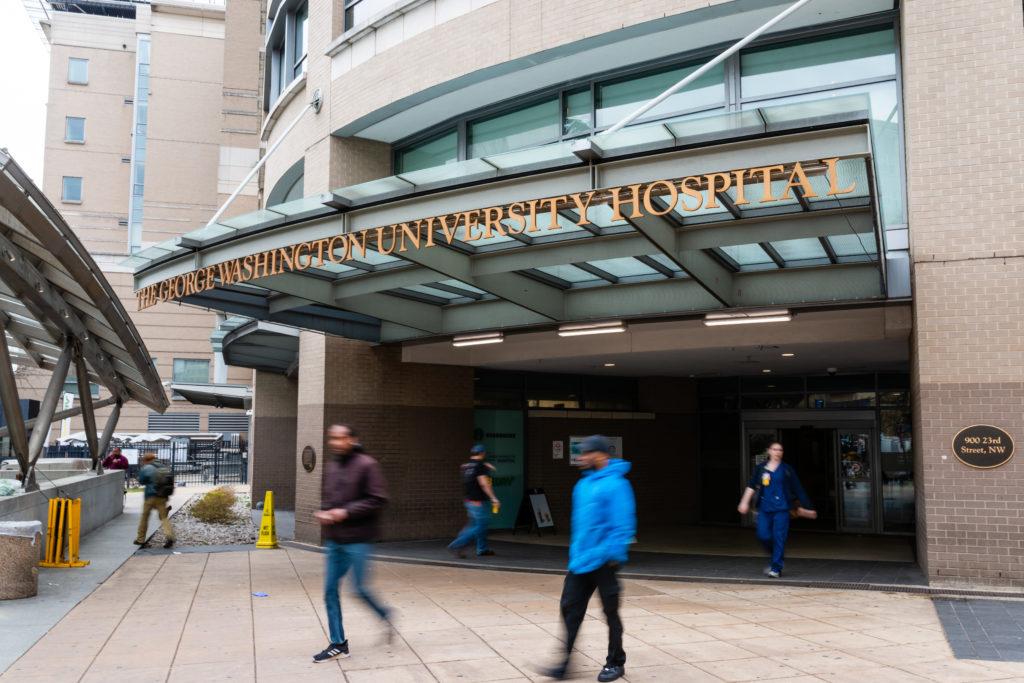Two professors in the Milken Institute School of Public Health released an interactive map earlier this month identifying primary care providers in the United States who treat patients with Medicaid.
The Medicaid Primary Care Workforce Tracker displays the ratio of providers who accept Medicaid — a government program that provides health insurance coverage for low-income Americans — to residents in each county and state from 2016 to 2019 and ranks each state based on the percentage of providers who accept patients on Medicaid. Patricia Pittman, the director of the Fitzhugh Mullan Institute for Health Workforce Equity and a lead researcher on the project, said the tracker’s data highlights areas with shortages of providers who take Medicaid, like Texas, Arizona and New Jersey, and disparities in coverage among states.
Pittman said some providers don’t accept Medicaid because payment rates for Medicaid are lower compared to Medicare — federal health insurance for people 65 or over — and private insurance. She said some providers feel the billing and authorization processes for Medicaid are “bureaucratic” and time-consuming and that there is a negative stigma associated with Medicaid patients because they are low income and often considered “sicker.”
“We know that it’s not enough to just enroll and qualify for Medicaid,” Pittman said. “That’s a huge hurdle in and of itself, but it’s even more tragic when you’re enrolled and you have the coverage and nobody’s willing to see you. And so the tracker is an effort to essentially shed light on this problem.”
The report reveals the total number of primary care providers who saw Medicaid patients rose 13 percent from 2016 to 2019, but Pittman said there is “tremendous variation” between states because each state operates its own Medicaid program and has different payment rates and administrative burdens. In 2019, the percentage of primary care providers who see at least 11 patients per year and accept patients with Medicaid widely varied, with 55.5 percent in Texas and 59.2 percent in New Jersey but 82 percent in Wisconsin and 85 percent in Vermont, according to the report.
In D.C., 60.1 percent of providers who see at least 11 patients per year saw patients with Medicaid in 2019, an increase from 38.1 percent in 2017, according to the report.
Pittman said the research team created the tracker using Medicaid claims data — requests for payment that providers submit to the program — and the National Provider Identifier database, which is a directory of all health care providers. She said the tracker is an effort to provide data in an interactive and useful format for researchers and policymakers so they can address disparities in access to health care for patients enrolled in Medicaid.
The number of OB-GYNs who saw Medicaid patients dropped 2.5 percent during the four-year time period and were the only specialty that dropped between 2016 to 2019, according to the report. Pittman said this decrease is likely because OB-GYNs tend to have lower Medicaid reimbursement rates and that increased restrictions on abortion have decreased the overall OB-GYN workforce.
Candice Chen, an associate professor of health policy and management and a lead researcher, said the majority of the increase in overall primary care providers who accept Medicaid comes from advanced practice nurses, like nurse practitioners, and physician assistants. She said policies should support systems and resources, like specialists who accept Medicaid patients, for advanced practice nurses – which she said are the fastest-growing clinician group – and physician assistants so they can continue to be able to treat patients with Medicaid and refer them to specialists if needed.
Chen said the tracker will be ongoing and will update as data from subsequent years becomes available. She said she is “worried” that COVID-19 caused the number of providers who take Medicaid to decrease because of the “pressure” it put on the health care system and workforce, which decreased the overall number of people working in health care.
“The practices, the organizations and the people who suffer the most are the ones who are underserved in the first place,” Chen said. “The Medicaid population is, by definition, right there. So I think our concern is that gap that COVID is likely going to leave.”
Experts in health policy and government healthcare systems said multiple factors explain the gaps in coverage seen on the map, including physician reimbursement rates and geographic conditions.
Eric Roberts, an associate professor of health policy at the University of Pennsylvania School of Medicine, said the tracker may help to spotlight deficiencies in coverage on a county level that may lead to patients going without care.
Roberts said since both state and federal budgets fund Medicaid, coverage varies by state largely due to the reimbursement rates for physicians for treating a Medicaid patient compared to other patients. He said the differences in payment rates between Medicaid and other types of insurance make it difficult for physicians to make a profit in low-income areas with high volumes of Medicaid patients, deterring providers from accepting the insurance.
He said some solutions to the lack of access to primary care providers for patients with Medicaid will come from state and federal government policies, while other solutions will come from addressing supply disparities, like the number of physicians per capita, for providers that serve disproportionately low-income communities.
“This also goes to show that clearly there is a role for state policy, but there’s more micro-level variations that require calibrated policy responses to address those access deficits,” Roberts said. “What this tells us is a portfolio of solutions that work at different levels is needed.”
Robert Field, a professor of health management and policy at Dornsife School of Public Health at Drexel University, said the tracker can help to pinpoint patterns in health coverage that can be correlated to other factors like environment.
“You can look at income inequality, demographic in terms of race, ethnicity. It really helps to do a geo mapping analysis to try to see where the problem spots are and then develop policies to adjust them,” Field said.






